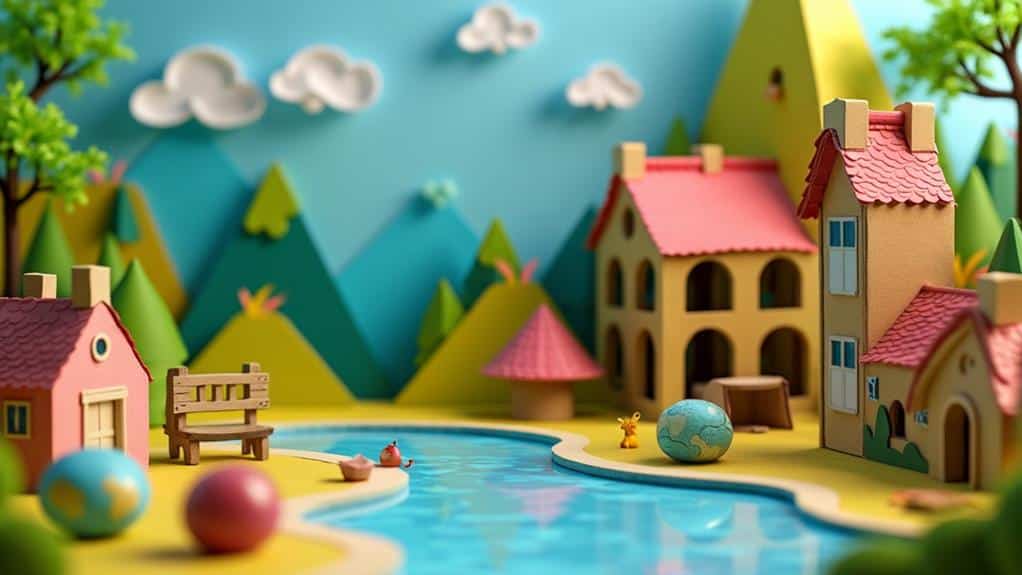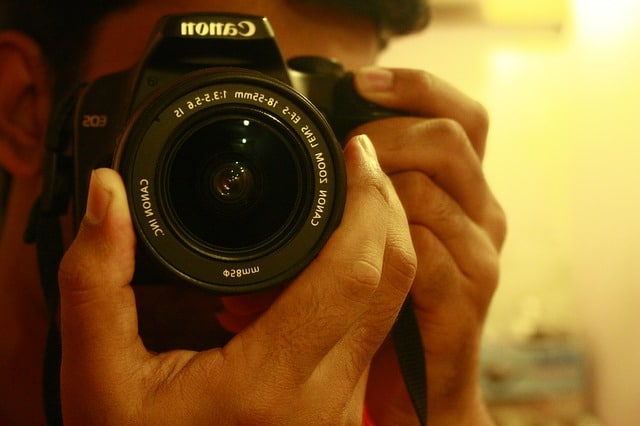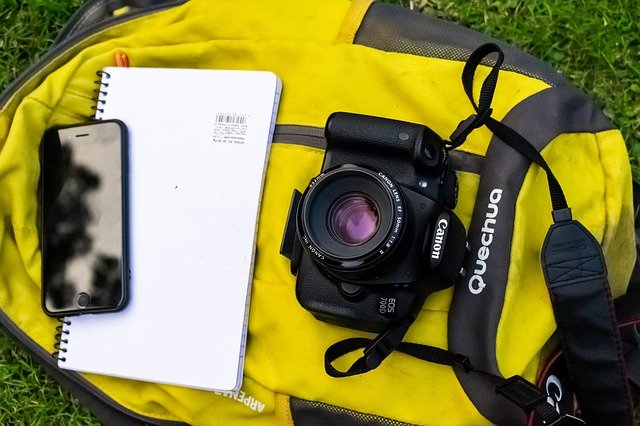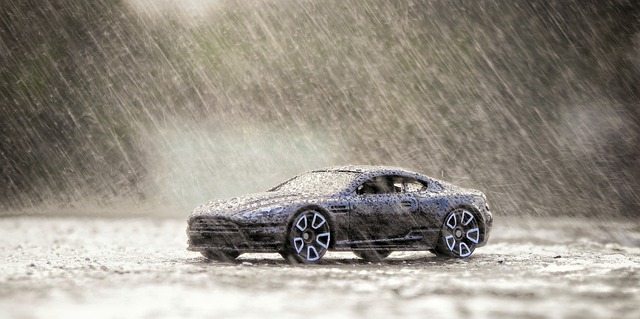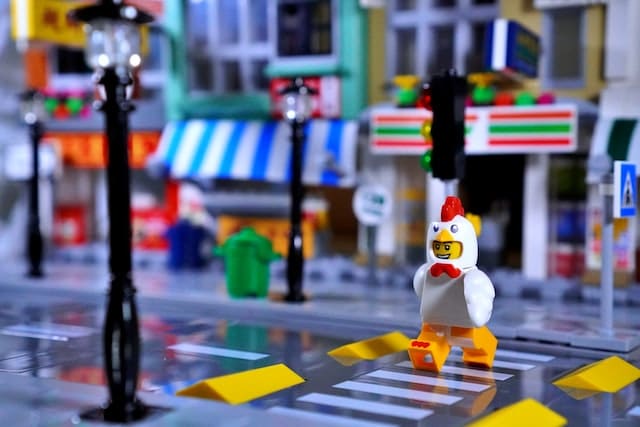When you incorporate cardboard into your toy photos, you open up a world of creative possibilities. You can craft versatile backgrounds and custom dioramas that bring depth and personality to your shots. Imagine transforming a simple sheet of cardboard into a bustling cityscape or a rugged terrain with just a bit of paint and a few markers. Its lightweight nature allows for easy manipulation, making it an affordable and eco-friendly choice. Curious about how cardboard can truly elevate your toy photography? Let's explore the unique textures and endless customization options it offers.
Key Takeaways
- Cardboard offers cost-effective and customizable backgrounds for diverse settings like cityscapes and forests.
- It allows for easy creation and manipulation of 3D structures and props, adding depth to scenes.
- Cardboard's light weight and portability make it convenient for on-the-go photography.
- Using cardboard encourages creativity and experimentation without significant expense.
- It supports eco-friendly practices by utilizing biodegradable and often recycled materials.
Versatile Backgrounds
Cardboard can be an incredibly versatile background for toy photography. You can transform plain cardboard into almost any setting you imagine. Start by painting it to match the theme of your photo. Want a cityscape? Draw and paint buildings. Need a forest? Add some green hues and tree shapes. You can also use markers, stickers, or printed images to enhance the look.
Another advantage of using cardboard is its adaptability. You can cut, fold, and shape it to create different dimensions and textures. If you're photographing action figures, you might want to create a rugged terrain. Simply cut the cardboard into uneven shapes and layer them. For a smoother backdrop, you can just use a single flat piece.
Cardboard offers a great way to experiment with different textures and colors, helping you find the perfect background for your toy photography. By experimenting with light and shadow, you can achieve balanced and stunning shots that captivate your audience.
Cardboard's affordability makes it a great choice for experimenting. If one idea doesn't work out, you can easily try another without breaking the bank. Plus, it's lightweight and easy to store when you're done. By utilizing cardboard, you can achieve professional-looking backgrounds without needing to invest in expensive materials. So, grab some cardboard, get creative, and watch your toy photography come to life With a little creativity, cardboard can even be adapted to work as a base for DIY lighting setups, helping you control shadows and highlights effectively. Pair your cardboard backgrounds with proper lighting equipment, and you’ll notice a big difference in your images—whether you’re doing a softbox or ring light comparison to find the ideal lighting. The versatility and low cost of cardboard make it a fantastic tool for refining your skills and elevating your toy photography to the next level.
Custom Dioramas
Creating custom dioramas with cardboard offers you versatile backdrop options that can be tailored to any scene. You can easily change and customize scenes to fit your toy photos, all without breaking the bank. This cost-effective creativity lets you bring your imaginative ideas to life in a unique and personal way. By carefully selecting props that align with your theme and mood, you can enhance the overall storytelling of your images. This approach allows you to create realistic environments and authentic moments
Versatile Backdrop Options
When it comes to elevating your toy photography, custom dioramas offer a versatile backdrop that brings your scenes to life. With cardboard, you can craft a wide range of settings that perfectly match your vision. Whether you're aiming for a cityscape, a forest, or even an outer space adventure, cardboard dioramas give you the flexibility to create the perfect environment for your toys.
Cardboard's adaptability allows you to paint, cut, and shape it into endless possibilities. You can easily add layers to create depth or use simple techniques like adding textures to give your backdrop a more realistic feel. The best part? Cardboard is budget-friendly and readily available, making it an accessible option for photographers of all skill levels.
Another great feature of cardboard backdrops is their portability. You can quickly assemble and disassemble your diorama, making it easy to transport and store. This means you can change your photo shoot location without much hassle. Plus, if you're looking to experiment with different lighting setups, cardboard backdrops are lightweight and easy to reposition.
Easy Scene Customization
Expanding on the versatility of cardboard dioramas, you'll find that customizing your scenes is both simple and incredibly rewarding. With just a few basic tools—scissors, glue, and paint—you can transform plain cardboard into intricate backdrops that suit any toy photography theme. Whether you want an urban setting, a lush forest, or an outer space adventure, the adaptability of cardboard makes it possible.
Start by sketching your desired scene on the cardboard. Don't worry if you're not an artist; even basic shapes can create depth and interest. Cut out the pieces, and layer them to add dimension. Use different textures and colors to bring your scene to life. For instance, crumple some cardboard for rocky surfaces or paint it green for grassy fields.
Cardboard's light weight allows you to easily rearrange elements, making on-the-fly adjustments a breeze. Want to change the setting from day to night? Simply swap out a background piece or adjust your lighting. The flexibility of cardboard means you can experiment without fear of making permanent changes. This freedom to innovate lets you create unique, mesmerizing scenes that enhance your toy photos.
Cost-Effective Creativity
One of the greatest advantages of using cardboard for custom dioramas is its cost-effectiveness. You don't need to spend a fortune to create stunning backdrops for your toy photos. Cardboard is inexpensive and often readily available from packages or craft stores. This means you can save money while still harnessing your creativity.
With just a few supplies like paint, markers, and glue, you can transform plain cardboard into detailed scenes that bring your toy photos to life. Whether you want to build a cityscape, an alien planet, or a cozy living room, cardboard offers endless possibilities. Plus, it's easy to cut, shape, and assemble, allowing you to experiment and refine your designs without breaking the bank.
Another benefit is that cardboard is lightweight and portable. You can quickly set up and dismantle your dioramas, making it convenient for on-the-go photography sessions. Additionally, using cardboard encourages you to think outside the box (pun intended). You'll develop your DIY skills and discover innovative ways to create engaging scenes. So, grab some cardboard, let your imagination run wild, and watch your toy photos become extraordinary without emptying your wallet.
Unique Textures
Cardboard offers a striking variety of unique textures that can bring toy photos to life. You might think of it as just a simple packaging material, but its versatility can truly elevate your shots. By incorporating different types of cardboard, you can create a range of backgrounds and scenes that add depth and interest to your photos. Cardboard can also be easily manipulated with diffusers and reflectors to enhance the lighting effects in your scenes.
Here are a few unique textures you can experiment with:
- Corrugated Cardboard: The ridges in corrugated cardboard provide an industrial look, perfect for creating rugged landscapes or warehouse scenes.
- Smooth Cardboard: Use smooth cardboard for a clean, polished background. It's great for modern settings or when you want the toys to be the main focus.
- Recycled Cardboard: This type often has a rougher texture and can be used to simulate worn-out surfaces or rustic environments. It adds an element of realism to the scene.
- Patterned Cardboard: Some cardboards come with printed patterns, which can serve as instant backdrops without any extra effort. Choose patterns that complement the theme of your photo
Affordable Props
Beyond the unique textures cardboard can offer, it also excels as an affordable prop. When you're setting up toy scenes, budget constraints can be a challenge. Cardboard is a cost-effective solution that won't break the bank. You can find it almost anywhere—leftover packaging, shipping boxes, or even old cereal boxes. This accessibility means you can experiment without worrying about wasting expensive materials.
Using cardboard allows you to create a variety of props, like buildings, vehicles, or even intricate backgrounds. With a little paint or markers, you can transform plain cardboard into vibrant, eye-catching elements for your photos. This versatility makes it easy to match your props to the theme of your shoot, whether it's a cityscape or a fantasy world.
Moreover, cardboard's affordability encourages creativity. You can test out different ideas and techniques without hesitation. If something doesn't work out, you haven't lost much. This freedom to experiment often leads to unexpected, delightful results. By incorporating cardboard into your toy photography, you not only save money but also open up endless creative possibilities for your scenes. So, grab some cardboard, and let your imagination run wild!
Easy Manipulation
Handling cardboard in your toy photography projects couldn't be simpler. It's an incredibly versatile material that you can cut, fold, and shape with ease. Plus, it's lightweight, making it easy to move around and position exactly how you want. Here are some ways you can manipulate cardboard to enhance your toy photos:
- Cut to Shape: Use scissors or a craft knife to cut cardboard into any shape you need. Whether it's a background, a prop, or a tiny accessory, you can get precise and intricate with your designs.
- Fold and Crease: Cardboard can be folded to create three-dimensional structures like buildings, boxes, or even miniature furniture. Just apply pressure along the desired fold lines to get sharp, clean edges.
- Paint and Decorate: Cardboard takes well to paint and other decorative elements. Customize it with colors and textures to match the scene you're creating. Markers, stickers, and even fabric can be added for extra detail.
- Layering: Glue or tape multiple pieces of cardboard together to add depth and complexity to your scenes. Layering can create a more dynamic and engaging photo by adding visual interest and dimension.
Eco-Friendly Choices
When you choose cardboard for your toy photography projects, you're making an eco-friendly choice that benefits both your art and the environment. Cardboard is biodegradable and often made from recycled materials, which means you're reducing waste and supporting sustainable practices. By opting for cardboard, you contribute to decreasing the demand for plastics and other non-renewable resources.
Using cardboard also encourages you to think creatively about reusing materials. That old shipping box or cereal package can be transformed into a stunning backdrop or intricate set piece. This not only saves you money but also keeps those items out of landfills. Plus, the versatility of cardboard means you can craft and modify it easily, reducing the need for additional materials and waste.
Moreover, cardboard's eco-friendliness doesn't compromise its effectiveness. It's sturdy enough to support your toy scenes yet light enough to manipulate effortlessly. You get the best of both worlds: a material that's kind to the Earth and perfect for your artistic needs. So, the next time you set up a toy photo shoot, remember that cardboard isn't just a practical choice—it's a responsible one too.
At a Glance
Incorporating cardboard into your toy photography opens up endless creative possibilities. You can craft versatile backgrounds, custom dioramas, and unique textures that make your scenes stand out. With its affordability and ease of manipulation, cardboard allows you to experiment without breaking the bank. Plus, it's an eco-friendly choice that's good for the planet. So go ahead, set free your imagination, and let cardboard elevate your toy photos to dazzling new heights!

